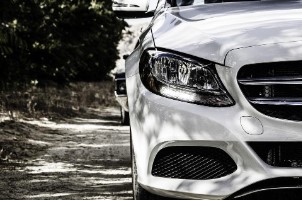When buying a new car, safety and looks are two of the most important factors that affect people’s decisions. Although the two apparently have nothing to do with one another, statistics show otherwise: some car colors are safer than others.
Why Are Some Car Colors More Dangerous Than Others?
The main reason why some car colors are more prone to accidents is tightly connected to how easy they are to see by other motorists. In other words, brightly colored cars are less likely to get involved in accidents because the bright colors make it easier for other drivers to notice them in due time, especially in bad weather or at night. Having a more visible car has other advantages too, as statistics show that they’re less likely to be stolen. On the other hand, dark-colored cars are significantly more prone to accidents than light-colored ones at the other end of the spectrum.
What Are the Most Dangerous Car Colors?
The most dangerous car colors are, as expected, the darkest ones. However, there are some exceptions to that rule. These are the colors that are statistically more prone to accidents:
- Black: According to statistics, the most dangerous car color is black. Different studies produce different figures, ranging from 10 to 20 percent more dangerous to a whopping 47 percent extra likely to get into an accident if you own a black car, compared to a light-colored one. Besides black cars being more difficult to see at night, they also blend into the surroundings during the day, creating that split-second of hesitation from other drivers that can lead to an accident.
- Grey and silver: Next on the list are the grey and silver cars. Most studies show that grey and silver cars have an increased likelihood of getting into accidents of around 10-11 percent, compared to light-colored cars. However, one surprising study conducted in New Zealand, which included over 500 cars involved in accidents, concluded that silver cars are up to 50 percent less likely to be involved in a serious crash than white cars, even when adjusting for other factors, such as the driver’s age, gender, average weekly driving time, or use of illicit substances.
- Blue: Blue is a prevalent color for many American motorists and brings an increased risk of getting into accidents. Besides blue looking similar to black in the nighttime, it also blends into the surroundings during the day, producing more accidents. As expected, the darker the shade of blue, the more prone you are to getting into an accident.
- Red: This is the main exception to the rule stating that more visible cars are less likely to get into accidents. Red is arguably the most visible car color out there, yet red cars have a higher risk of getting into accidents than white or other light-colored ones are. The main reason is likely to be that many elements in traffic, such as brake lights, traffic lights, road signs, sirens, and many more, are all red. This causes drivers to occasionally have a hard time distinguishing a red car from the background.
- Green: Although green cars are significantly safer than black or grey ones, they still get involved in a disproportionate amount of accidents compared to light-colored ones. The reason is similar to that of blue or red ones: many green things around us can confuse.
What Are the Safest Car Colors?

Unsurprisingly, brighter car colors are usually safer than darker ones. These are the colors that statistically keep you safer from accidents:
- White and yellow: As you would expect, most studies show that white cars are the safest to drive. Given that few elements in traffic are completely white, a white car creates much contrast with its environment, making it easier to spot by others. Yellow cars are similar to white ones in terms of safety, with some studies even putting them at number one.
- Orange: Like white and yellow ones, orange vehicles stand out against the background, making them easier to spot by other drivers. Another plus for orange-colored cars is that there aren’t many of them on the road, which means that drivers tend to notice them immediately.
- Gold: Maybe having a gold car isn’t the most inspired stylistic choice, but one thing’s for certain: other drivers will definitely notice it quicker than a dark-colored one. Just like orange vehicles, gold-colored ones not only stand out against the background, but they’re also rare enough to make others notice them.
Other Important Safety Factors
While your car’s color can influence the likelihood of getting into an accident, the most important safety factor isn’t the car itself or any of its characteristics, but the person sitting behind the wheel. You can reduce the odds of you getting into an accident by paying attention to these factors:
- Weather conditions: Always adapt your driving style to road conditions like rain, fog, and snow. Not only do you have reduced visibility and increased braking distance, but so does everyone else on the road.
- Distracted driving: Those drivers who don’t immediately notice dark-colored cars may do so because they’re not paying full attention to the road. When you’re solely focused on driving, you’ll avoid distractions and notice any potential danger in less time.
- Aggressive driving: Likewise, driving over the speed limit, taking fast corners, and rushing to beat traffic lights is a much higher accident risk than the color of your car. Rushing in traffic will probably not get you there quicker, but it may get you in an accident.
- Driving under the influence: Needless to say, getting behind the wheel under the influence of alcohol or drugs is a huge risk for yourself, your passengers, and anyone else around you.
Being a safe driver is not only a good way of avoiding accidents, but it can also lower your car insurance rate. So visit us at American Auto Insurance and get a free qu


